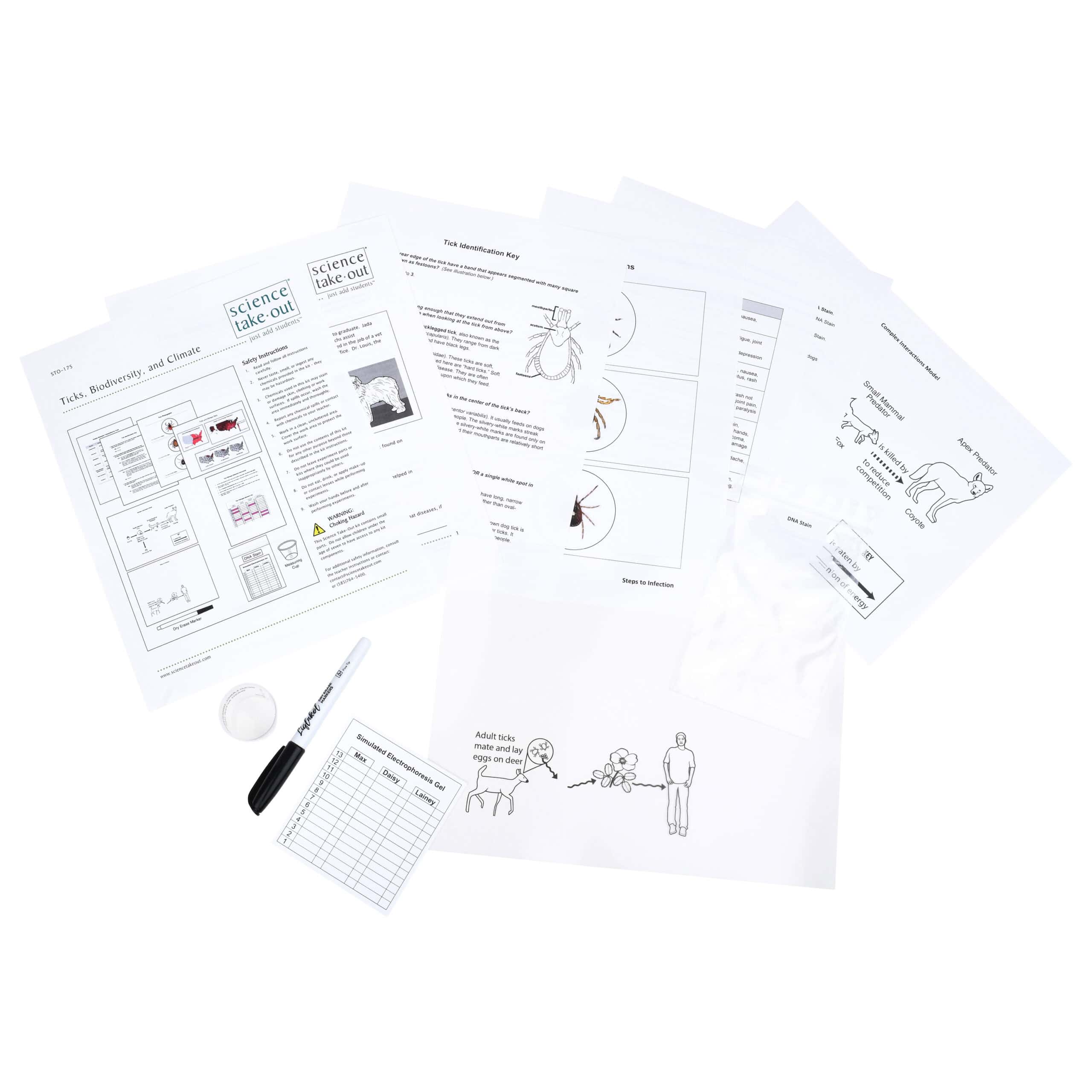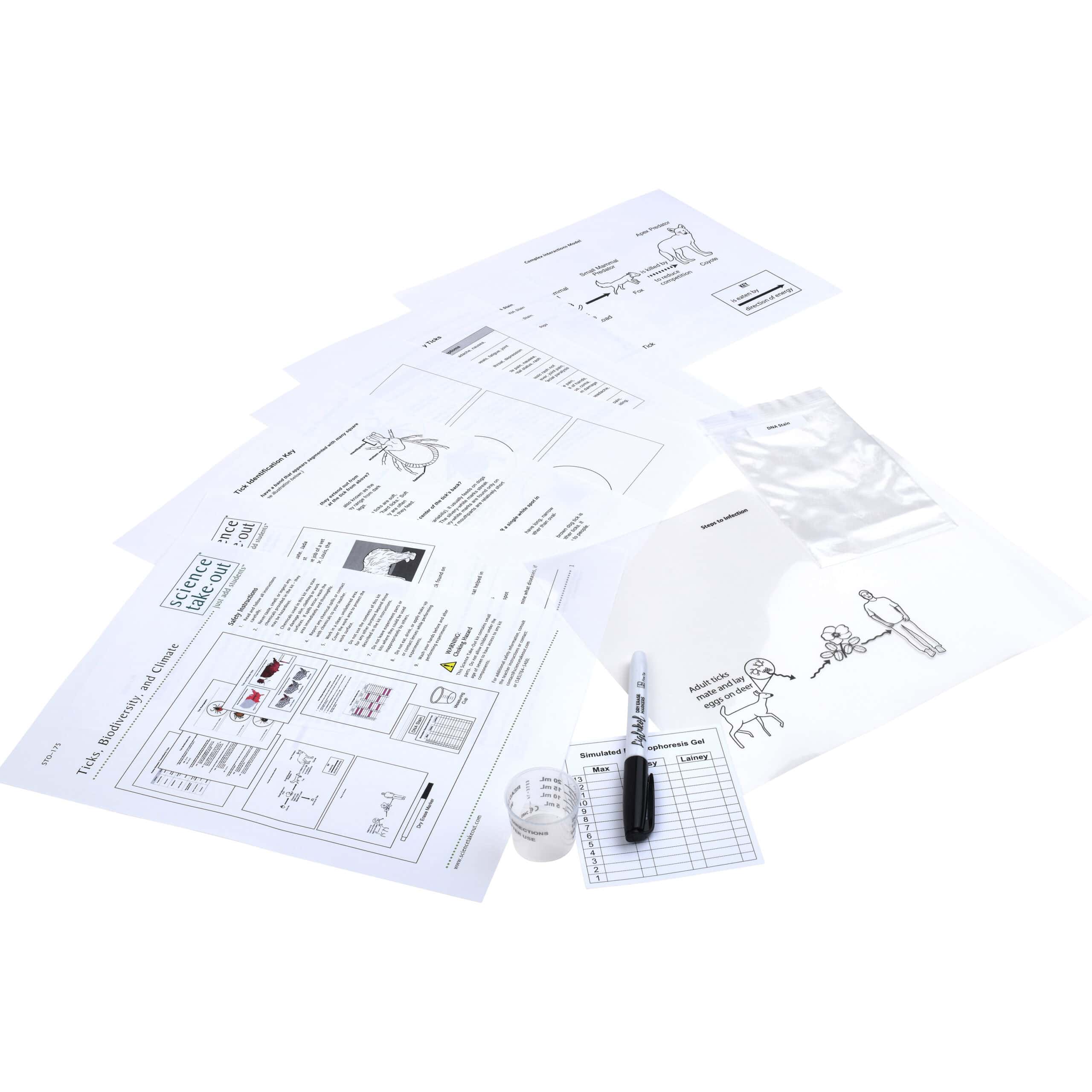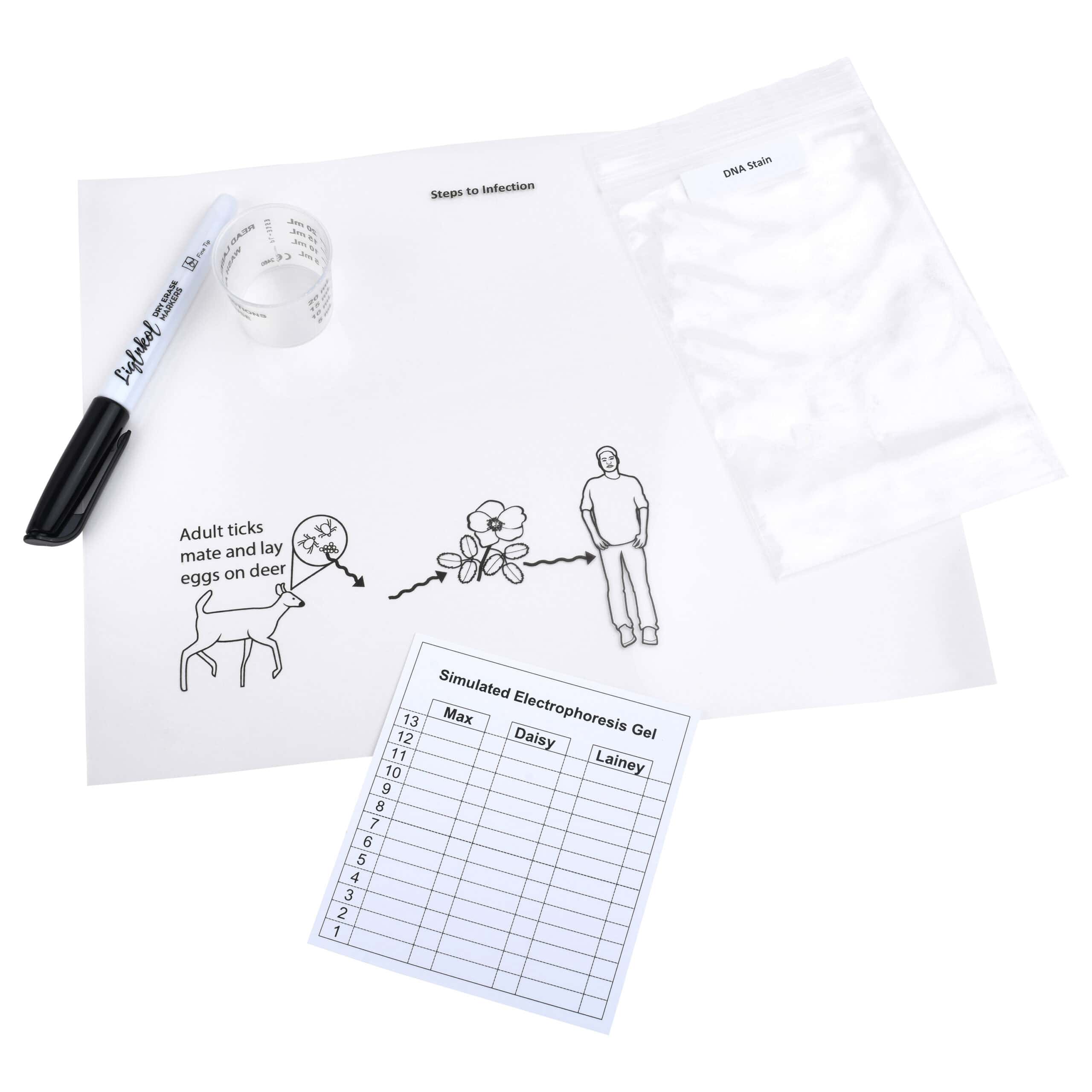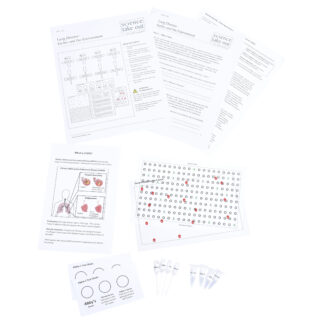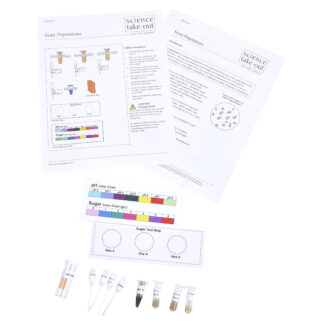Ticks, Biodiversity, and Climate
$16.95 – $127.95
Follow a real-life scenario to investigate why tick-borne diseases are on the rise.
- Identify ticks found on three dogs and determine what diseases these types of ticks can transmit to humans.
- Perform simulated DNA electrophoresis to investigate if the ticks were carrying pathogens.
- Analyze data on tick-borne diseases, tick distribution, and climate to explain the increase in tick-borne diseases.
- Use a model and data to explore how biodiversity and interactions in the ecosystem are involved in the pattern of tick-borne diseases.
- Explore internet resources to address questions that pet owners have about tick-borne diseases.
Kit Includes
- Tick Identification Key
- Tick Photographs
- Human Diseases Transmitted by Ticks sheet
- Tick Pathogens Detection Instructions
- Simulated Electrophoresis Gel
- Plastic bag with DNA Stain (simulated)
- Small measuring cup
- Ticks and Climate Data sheet
- Complex Interactions Model sheet
- Steps to Infection transparency sheet
- Dry erase marker
Also Required
- Access to internet
- Safety goggles
- paper towels for clean-up
Quantity Discounts
Kits:
- 1 – 9 kits: $16.95 each
- 10 – 24 kits: $16.10 each
- 25+ kits: $15.26 each
Unassembled:
- 1 – 9 packs: $127.95 each
- 10+ packs: $121.55 each
Refills:
- 1 – 9 packs: $34.95 each
- 10+ packs: $33.20 each
Correlation to Next Generation Science Standards (NGSS) Shop by NGSS »
Performance Expectations:
MS-LS2-2. Construct an explanation that predicts patterns of interactions among organisms across multiple ecosystems.
MS-LS2-4. Construct an argument supported by empirical evidence that changes to physical or biological components of an ecosystem affect populations.
HS-LS2-6.Evaluate the claims, evidence, and reasoning that the complex interactions in ecosystems maintain relatively consistent numbers and types of organisms in stable conditions, but changing conditions may result in a new ecosystem.
Science & Engineering Practices
Constructing Explanations
- Construct an explanation that includes qualitative or quantitative relationships between variables that predict phenomena.
- Construct an oral and written argument supported by empirical evidence and scientific reasoning to support or refute an explanation or a model for a phenomenon or a solution to a problem.
Disciplinary Core Ideas
LS2.A: Interdependent Relationships in Ecosystems
Predatory interactions may reduce the number of organisms or eliminate whole populations of organisms. Mutually beneficial interactions, in contrast, may become so interdependent that each organism requires the other for survival. Although the species involved in these competitive, predatory, and mutually beneficial interactions vary across ecosystems, the patterns of interactions of organisms with their environments, both living and nonliving, are shared.
LS2.C: Ecosystem Dynamics, Functioning, and Resilience
- A complex set of interactions within an ecosystem can keep its numbers and types of organisms relatively constant over long periods of time under stable conditions. If a modest biological or physical disturbance to an ecosystem occurs, it may return to its more or less original status (i.e., the ecosystem is resilient), as opposed to becoming a very different ecosystem. Extreme fluctuations in conditions or the size of any population, however, can challenge the functioning of ecosystems in terms of resources and habitat availability.
- Ecosystems are dynamic in nature; their characteristics can vary over time. Disruptions to any physical or biological component of an ecosystem can lead to shifts in all its populations.
Crosscutting Concepts
Patterns - Patterns can be used to identify cause and effect relationships.
Stability and Change - Much of science deals with constructing explanations of how things change and how they remain stable.
Small changes in one part of a system might cause large changes in another part.
Cause and Effect - Cause and effect relationships may be used to predict phenomena in natural or designed systems.
